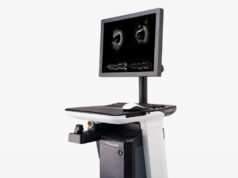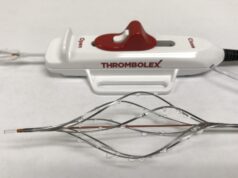
Incomplete tumour treatment and local tumour progression remain important limitations to the widespread use of radiofrequency ablation for colorectal liver metastases. This means it is vital to develop and apply prognostic markers to identify patients at increased risk for local tumour progression after ablation. A new study, recently published in Radiology, finds that biopsy of the ablation zone after ablation is feasible.
Vlasios Sotirchos, Constantinos Sofocleous (both from the Section of Interventional Radiology, Department of Radiology, Memorial Sloan-Kettering Cancer Center, New York, USA) and others note in the study that biopsy proof of complete tumour ablation and minimal ablation margins of ≥5mm are independent predictors of local tumour progression and yield the best outcomes.
According to Sotirchos et al, incomplete tumour treatment and local tumour progression “remain important limitations” to the widespread use of radiofrequency ablation for colorectal liver metastases. The authors add: “Thus, it is crucial to develop and apply prognostic markers to identify patients at increased risk for local tumour progression after ablation.”
The authors note that histopathological analysis of tissue that sticks to radiofrequency electrodes after ablation is feasible and has prognostic value but is limited because such tissue is not “uniformly present and is usually absent with newer radiofrequency electrodes and other devices”. So, they evaluated the prognostic value of pathologic examinations of tissue obtained with image-guided core needle biopsies from the radiographic centre and margin of the ablation zone immediately after radiofrequency ablation of colorectal liver metastases.
In the study, 47 patients (with 67 colorectal liver metastases) underwent image-guided radiofrequency ablation. Immediately after the ablation procedure, image-guided biopsy was performed from the tumour centre and the suspected minimal margin of the ablation zone. Sotirchos et al report that “at least one core biopsy” was obtained from the centre of the ablation zone in all patients and was evaluated for the presence of viable tumour cells. Samples containing tumour cells at morphologic evaluation were further interrogated with immunohistochemistry and classified as either positive, if they had viable tumour or negative, if they were necrotic.
Overall, 98% of ablated lesions had no evidence of residual tumour at the first post- ablation, contrast-enhanced CT scan (performed at four to eight weeks after ablation). The cumulative incidence of local tumour progression at one-year follow-up was 22%. Samples from 24% of 67 ablation zones were classified as viable tumour. Local tumour progression occurred significantly more often in patients with lesion classified as viable compared with those with lesions classified as necrotic: 69% vs. 20%, respectively (p<0.001). At univariate analysis, tumour size, minimal margin size, and biopsy results were significant in predicting local tumour progression, the authors write.
Furthermore, in a multivariate analysis, positive post-ablation biopsy (p=0.008) and minimal ablation margin size (<5mm; p<0.001) were independent predictors of shorter time to local tumour progression.
The authors note that the hazard ratio for patients with both positive post-ablation biopsy and minimal ablation margin size of <5mm was 22.8, commenting: “Recurrence within the first 12 months after radiofrequency ablation occurred in one (3%) of 34 biopsy negative ablation zones with minimal margins (≥5mm) and in eight (73%) of 11 biopsy-positive ablation zones with inadequate margins (<5mm; p<0.01).”
Presenting the data at the World Congress of Interventional Oncology (9–12 June, Boston, USA), Sofocleous said: “Biopsy of the ablation zone is feasible and a positive biopsy alone carries three to four times the risk of local progression when compared with a negative biopsy. Therefore, I would like to ask interventional oncologists if they think it is time to routinely perform biopsies or does this approach require further validation?”
He further commented that the team were carrying out a similar analysis after microwave ablation of colorectal liver metastasis patients, and that the data collection and analysis was still ongoing.
Sofocleous told Interventional News: “We have not yet routinely implemented biopsy after ablation outside our on-going prospective study, which is still open and enrolling. However, I certainly recommend that and plan to campaign internally and globally for this to become standard of care.”










